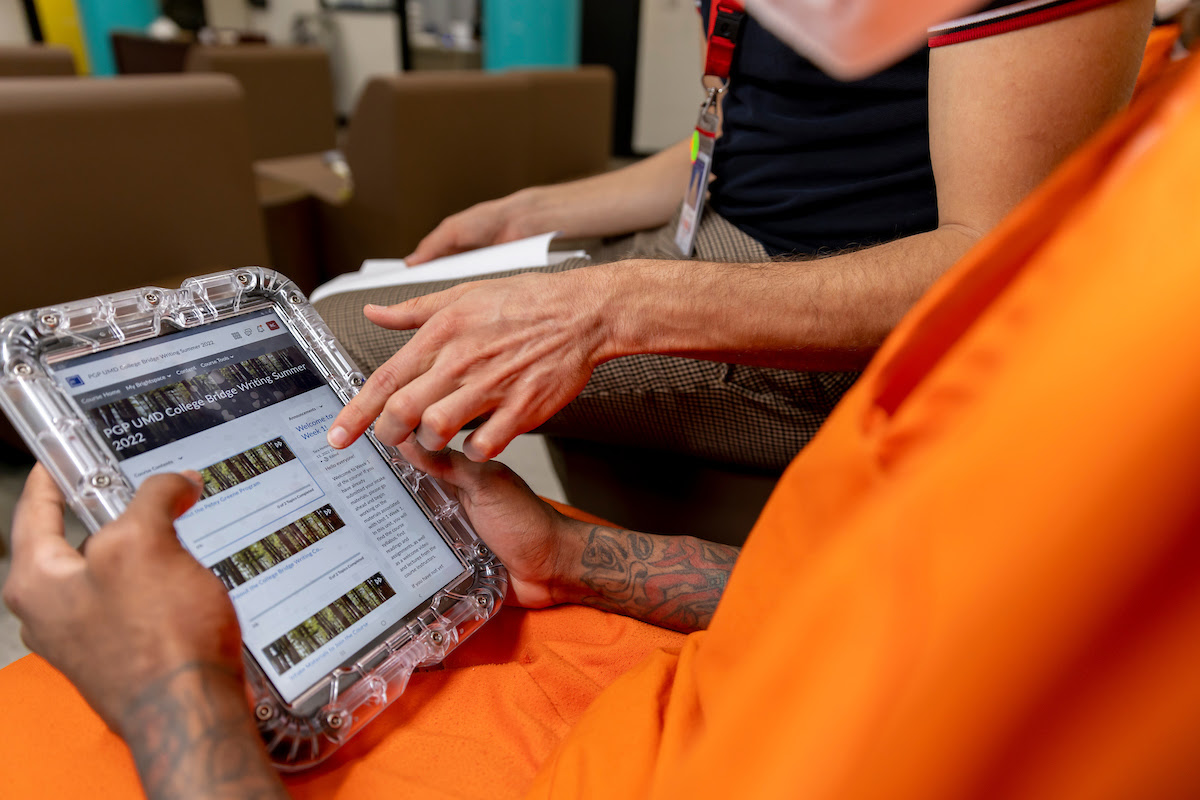The Role of Technology in Prison Reform and Reentry
Navigating the whirlwind of evolving technology can be daunting for anyone, but the challenge takes on a different scale for those like me. I’m part of the 1.9 million individuals incarcerated in the United States, and technology, for us, is not a luxury—it’s a lifeline. The leap from being isolated within prison walls to bridging the digital divide might seem gigantic, but it’s a critical step toward successful reentry.
I consider myself one of the fortunate ones. Working with Televerde, an organization that hires and provides tech skill training for incarcerated individuals, has transformed my life. Learning tech skills while incarcerated is more than just keeping up with the times. It’s a beacon of hope, a pathway to rehabilitation, and an opportunity to remain connected with the world outside these walls.
In my rehabilitation journey, embracing tech skills has been a monumental game-changer. Keeping pace with technology provides a sense of relevance and capability. It doesn’t just boost my confidence—it fuels a sense of empowerment, alleviating the anxiety associated with reintegration into society post-incarceration. The rapid pace of technological advancements can render those of us serving time as virtual time travelers stepping into a futuristic world upon release. These tech skills equip us to navigate the world we once knew and the one we’re about to reenter.
Tech Skills for a Better Future
Enhanced communication is one of the fundamental doors technology has unlocked for inmates. Tablets and messaging apps have broken barriers, facilitating a more effective connection with loved ones. More profoundly, tech-based classes have allowed me to acquire skills in a field I enjoy. Even while incarcerated, this employment opportunity with Televerde will enable me to learn, grow, and stay current with changing business trends.
The transformation I’ve witnessed in my fellow inmates equipped with tech skills is remarkable. They approach their impending release with less fear and more determination. They are less likely to revert to old habits, and their heightened confidence and employability create a robust foundation for their reintegration into society. In fact, research shows technology’s impact in reducing recidivism and improving social and economic outcomes for incarcerated people.
However, the implementation of tech education in prisons is not without its challenges. Restrictions and fears, mainly regarding the potential misuse of this knowledge, can create stumbling blocks. But I firmly believe these obstacles can be overcome by employing innovative control strategies akin to parental controls used for children. Customizable programs that track usage could ensure compliance with usage rules while providing a valuable educational resource.
A Lifeline to Opportunity
Tech skills play a crucial role in reducing recidivism rates. Even seemingly simple tasks, like using a cellphone or accessing digital banking, can be overwhelming for most returning citizens. As society increasingly relies on mobile devices for almost all daily life, navigating these devices proficiently becomes essential. Add to that the difficulties of finding employment post-incarceration and the significance of having sought-after tech skills become blatantly evident. These skills not only increase employment opportunities but also instill confidence and provide a sense of hope, reducing the risk of falling back into old habits.
The most beneficial tech programs for inmates would start with the basics – using computers, tablets, and cell phones. However, they should extend to teaching web navigation, different technologies vital in businesses, banking, and social media platforms, and even specialized skills like coding and cybersecurity.
The tech community has a vital role in supporting prison tech education programs. Encouraging more initiatives like Televerde, the PATHS program through the Televerde Foundation, and The Last Mile can create a more robust system. They can help provide up-to-date curriculums, simulate real-world job scenarios, and offer greater access to technology, reducing the learning curve for inmates upon release.
The Path to Rehabilitation and Reintegration
Fear, limited resources, and a mindset skewed toward punishment rather than rehabilitation often limit the use of technology in prisons. While the concerns surrounding misuse are legitimate, they shouldn’t overshadow the potential benefits. Investing in technology education not only requires funding but also a paradigm shift. Instead of viewing incarceration purely as punishment, it’s time we recognize the value of rehabilitation, giving individuals the tools they need to become productive members of society post-release.
The myopic focus on punishment rather than rehabilitation within our criminal justice system misses the forest for the trees. National recidivism averages highlight the chilling reality: 68 percent of individuals return to prison within three years of release. Joblessness is the No. 1 predictor of this revolving prison door, a door that burdens taxpayers with an $80 billion bill annually. But it doesn’t stop at economic tolls. This revolving door weakens families and communities, escalating crime rates and tearing families apart. This approach helps no one, and in the long run, it’s unsustainable.
Our society needs a paradigm shift. Embracing technology in prison reform and reentry is no easy feat, but the potential personal, social, and economic rewards are well worth the effort. These skills equip inmates with the ability to adapt and thrive in a rapidly evolving society, drastically improving their chances of successful reentry and dramatically reducing the likelihood of recidivism. As I look ahead to my future outside these walls, I am lifted by the knowledge that I have the skills and confidence to meet it head-on. It’s a long game, but we should all be in it to win it.


